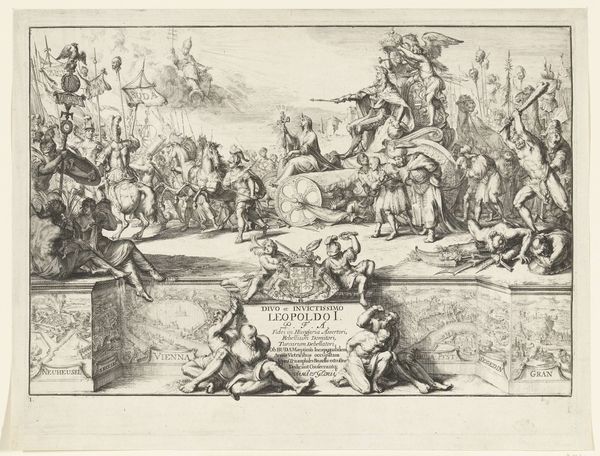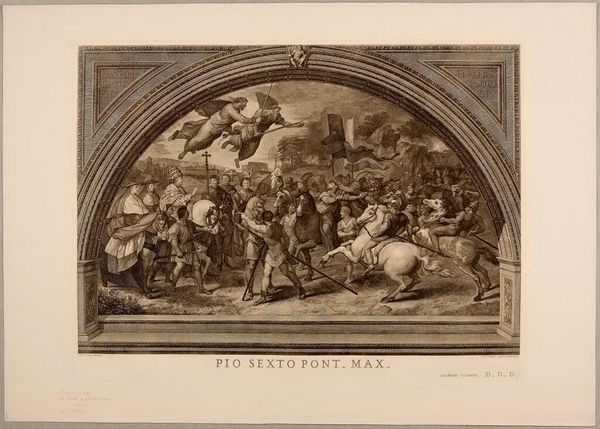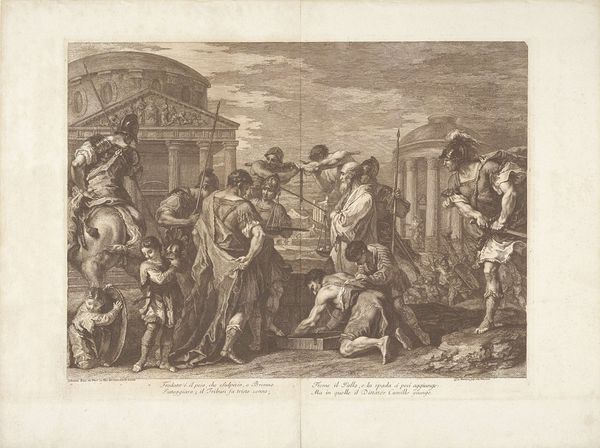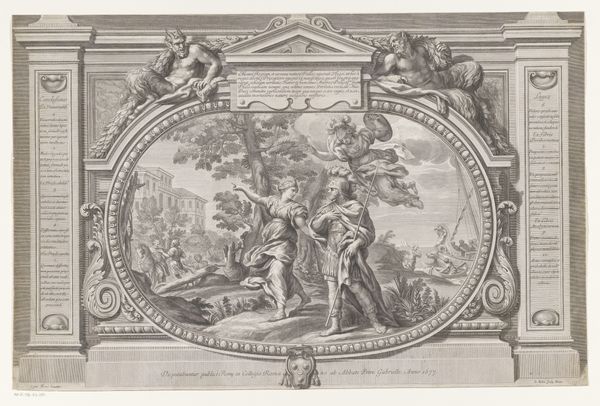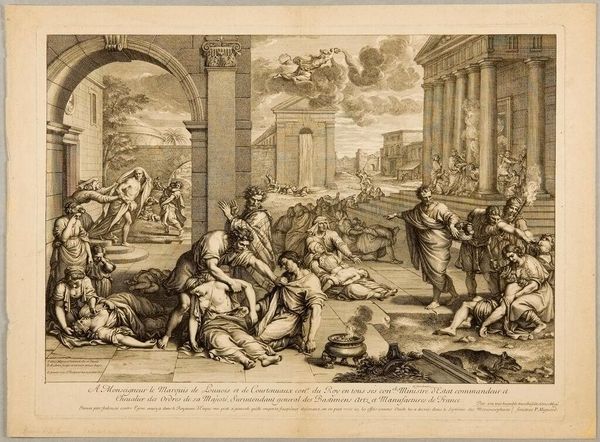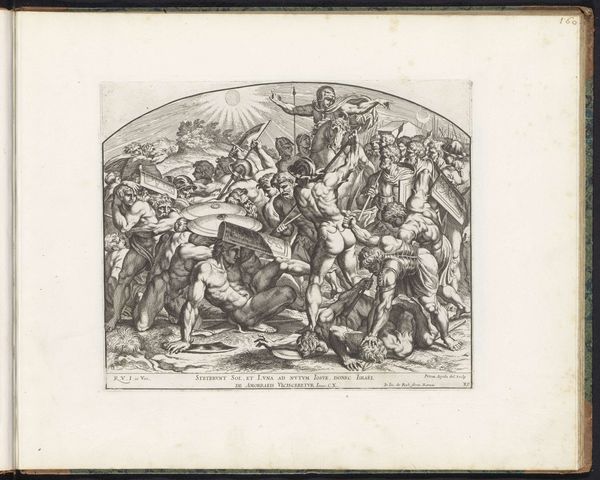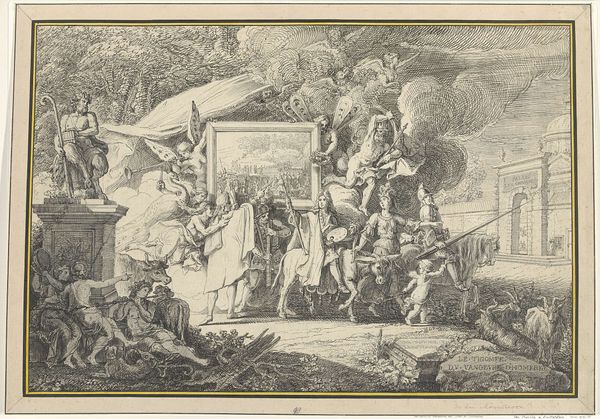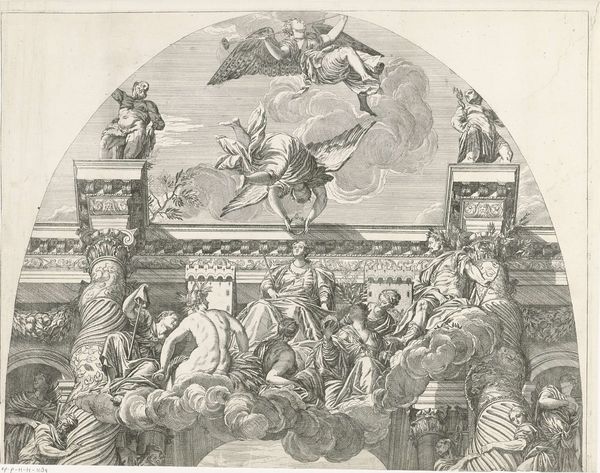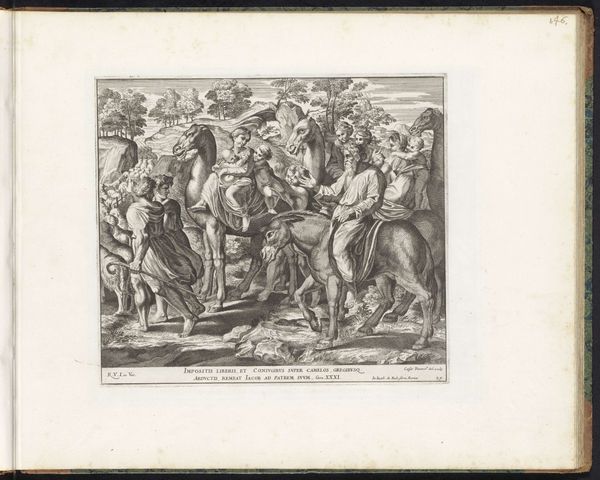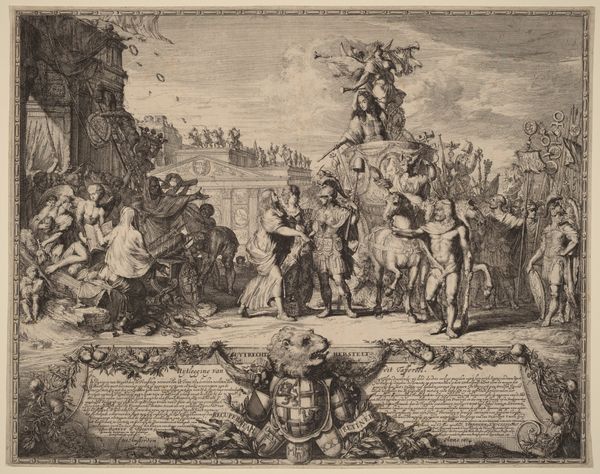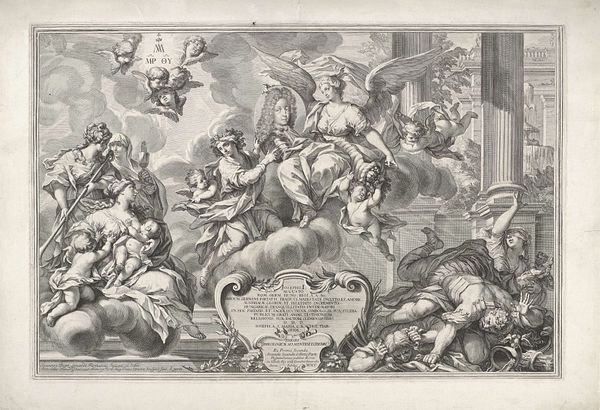
Defeat of Attila c. 18th century
Copyright: CC0 1.0
Curator: This is Francesco Faraone Aquila's "Defeat of Attila," currently residing at the Harvard Art Museums. There’s no date listed, but Aquila lived 1676 to 1740. The image is dominated by conflict. Editor: It's a chaotic scene. The figures on horseback lend a violent energy, but look above—two figures in the clouds, they bring another dimension to the narrative, almost as if heaven itself intervened. Curator: Yes, the figures are often interpreted as Saint Peter and Saint Paul, and their presence is essential for understanding the socio-political narrative. It is a statement on the papacy's power and its ability to halt Attila's march on Rome. Editor: I see. The visual language reinforces this idea: the saints are active participants, literally driving Attila back. It's a potent example of divine authority made visible through symbolic figures. Curator: Absolutely. It situates Rome as not just a city, but a divinely protected space. The work reflects the complex relationship between political power and religious legitimacy. Editor: The image certainly leaves a lasting impression about how cultural memory is shaped through visual storytelling.
Comments
No comments
Be the first to comment and join the conversation on the ultimate creative platform.
